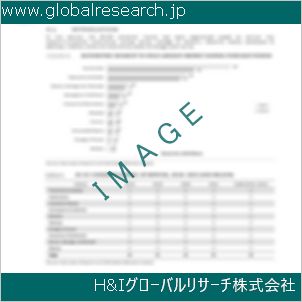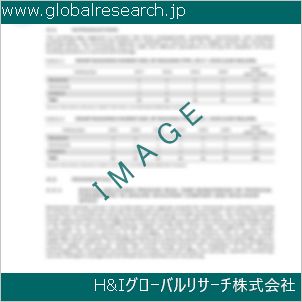1 Organic Pigment Dispersions Market Overview
1.1 Product Definition
1.2 Organic Pigment Dispersions Segment by Type
1.2.1 Global Organic Pigment Dispersions Market Value Growth Rate Analysis by Type 2022 VS 2029
1.2.2 Water-Based
1.2.3 Oil-Based
1.3 Organic Pigment Dispersions Segment by Application
1.3.1 Global Organic Pigment Dispersions Market Value Growth Rate Analysis by Application: 2022 VS 2029
1.3.2 Printing Inks
1.3.3 Plastic
1.3.4 Coatings
1.3.5 Others
1.4 Global Market Growth Prospects
1.4.1 Global Organic Pigment Dispersions Production Value Estimates and Forecasts (2018-2029)
1.4.2 Global Organic Pigment Dispersions Production Capacity Estimates and Forecasts (2018-2029)
1.4.3 Global Organic Pigment Dispersions Production Estimates and Forecasts (2018-2029)
1.4.4 Global Organic Pigment Dispersions Market Average Price Estimates and Forecasts (2018-2029)
1.5 Assumptions and Limitations
2 Market Competition by Manufacturers
2.1 Global Organic Pigment Dispersions Production Market Share by Manufacturers (2018-2023)
2.2 Global Organic Pigment Dispersions Production Value Market Share by Manufacturers (2018-2023)
2.3 Global Key Players of Organic Pigment Dispersions, Industry Ranking, 2021 VS 2022 VS 2023
2.4 Global Organic Pigment Dispersions Market Share by Company Type (Tier 1, Tier 2 and Tier 3)
2.5 Global Organic Pigment Dispersions Average Price by Manufacturers (2018-2023)
2.6 Global Key Manufacturers of Organic Pigment Dispersions, Manufacturing Base Distribution and Headquarters
2.7 Global Key Manufacturers of Organic Pigment Dispersions, Product Offered and Application
2.8 Global Key Manufacturers of Organic Pigment Dispersions, Date of Enter into This Industry
2.9 Organic Pigment Dispersions Market Competitive Situation and Trends
2.9.1 Organic Pigment Dispersions Market Concentration Rate
2.9.2 Global 5 and 10 Largest Organic Pigment Dispersions Players Market Share by Revenue
2.10 Mergers & Acquisitions, Expansion
3 Organic Pigment Dispersions Production by Region
3.1 Global Organic Pigment Dispersions Production Value Estimates and Forecasts by Region: 2018 VS 2022 VS 2029
3.2 Global Organic Pigment Dispersions Production Value by Region (2018-2029)
3.2.1 Global Organic Pigment Dispersions Production Value Market Share by Region (2018-2023)
3.2.2 Global Forecasted Production Value of Organic Pigment Dispersions by Region (2024-2029)
3.3 Global Organic Pigment Dispersions Production Estimates and Forecasts by Region: 2018 VS 2022 VS 2029
3.4 Global Organic Pigment Dispersions Production by Region (2018-2029)
3.4.1 Global Organic Pigment Dispersions Production Market Share by Region (2018-2023)
3.4.2 Global Forecasted Production of Organic Pigment Dispersions by Region (2024-2029)
3.5 Global Organic Pigment Dispersions Market Price Analysis by Region (2018-2023)
3.6 Global Organic Pigment Dispersions Production and Value, Year-over-Year Growth
3.6.1 North America Organic Pigment Dispersions Production Value Estimates and Forecasts (2018-2029)
3.6.2 Europe Organic Pigment Dispersions Production Value Estimates and Forecasts (2018-2029)
3.6.3 China Organic Pigment Dispersions Production Value Estimates and Forecasts (2018-2029)
3.6.4 Japan Organic Pigment Dispersions Production Value Estimates and Forecasts (2018-2029)
4 Organic Pigment Dispersions Consumption by Region
4.1 Global Organic Pigment Dispersions Consumption Estimates and Forecasts by Region: 2018 VS 2022 VS 2029
4.2 Global Organic Pigment Dispersions Consumption by Region (2018-2029)
4.2.1 Global Organic Pigment Dispersions Consumption by Region (2018-2023)
4.2.2 Global Organic Pigment Dispersions Forecasted Consumption by Region (2024-2029)
4.3 North America
4.3.1 North America Organic Pigment Dispersions Consumption Growth Rate by Country: 2018 VS 2022 VS 2029
4.3.2 North America Organic Pigment Dispersions Consumption by Country (2018-2029)
4.3.3 United States
4.3.4 Canada
4.4 Europe
4.4.1 Europe Organic Pigment Dispersions Consumption Growth Rate by Country: 2018 VS 2022 VS 2029
4.4.2 Europe Organic Pigment Dispersions Consumption by Country (2018-2029)
4.4.3 Germany
4.4.4 France
4.4.5 U.K.
4.4.6 Italy
4.4.7 Russia
4.5 Asia Pacific
4.5.1 Asia Pacific Organic Pigment Dispersions Consumption Growth Rate by Region: 2018 VS 2022 VS 2029
4.5.2 Asia Pacific Organic Pigment Dispersions Consumption by Region (2018-2029)
4.5.3 China
4.5.4 Japan
4.5.5 South Korea
4.5.6 China Taiwan
4.5.7 Southeast Asia
4.5.8 India
4.6 Latin America, Middle East & Africa
4.6.1 Latin America, Middle East & Africa Organic Pigment Dispersions Consumption Growth Rate by Country: 2018 VS 2022 VS 2029
4.6.2 Latin America, Middle East & Africa Organic Pigment Dispersions Consumption by Country (2018-2029)
4.6.3 Mexico
4.6.4 Brazil
4.6.5 Turkey
5 Segment by Type
5.1 Global Organic Pigment Dispersions Production by Type (2018-2029)
5.1.1 Global Organic Pigment Dispersions Production by Type (2018-2023)
5.1.2 Global Organic Pigment Dispersions Production by Type (2024-2029)
5.1.3 Global Organic Pigment Dispersions Production Market Share by Type (2018-2029)
5.2 Global Organic Pigment Dispersions Production Value by Type (2018-2029)
5.2.1 Global Organic Pigment Dispersions Production Value by Type (2018-2023)
5.2.2 Global Organic Pigment Dispersions Production Value by Type (2024-2029)
5.2.3 Global Organic Pigment Dispersions Production Value Market Share by Type (2018-2029)
5.3 Global Organic Pigment Dispersions Price by Type (2018-2029)
6 Segment by Application
6.1 Global Organic Pigment Dispersions Production by Application (2018-2029)
6.1.1 Global Organic Pigment Dispersions Production by Application (2018-2023)
6.1.2 Global Organic Pigment Dispersions Production by Application (2024-2029)
6.1.3 Global Organic Pigment Dispersions Production Market Share by Application (2018-2029)
6.2 Global Organic Pigment Dispersions Production Value by Application (2018-2029)
6.2.1 Global Organic Pigment Dispersions Production Value by Application (2018-2023)
6.2.2 Global Organic Pigment Dispersions Production Value by Application (2024-2029)
6.2.3 Global Organic Pigment Dispersions Production Value Market Share by Application (2018-2029)
6.3 Global Organic Pigment Dispersions Price by Application (2018-2029)
7 Key Companies Profiled
7.1 BASF SE
7.1.1 BASF SE Organic Pigment Dispersions Corporation Information
7.1.2 BASF SE Organic Pigment Dispersions Product Portfolio
7.1.3 BASF SE Organic Pigment Dispersions Production, Value, Price and Gross Margin (2018-2023)
7.1.4 BASF SE Main Business and Markets Served
7.1.5 BASF SE Recent Developments/Updates
7.2 Sudarshan Chemical
7.2.1 Sudarshan Chemical Organic Pigment Dispersions Corporation Information
7.2.2 Sudarshan Chemical Organic Pigment Dispersions Product Portfolio
7.2.3 Sudarshan Chemical Organic Pigment Dispersions Production, Value, Price and Gross Margin (2018-2023)
7.2.4 Sudarshan Chemical Main Business and Markets Served
7.2.5 Sudarshan Chemical Recent Developments/Updates
7.3 DIC Corporation
7.3.1 DIC Corporation Organic Pigment Dispersions Corporation Information
7.3.2 DIC Corporation Organic Pigment Dispersions Product Portfolio
7.3.3 DIC Corporation Organic Pigment Dispersions Production, Value, Price and Gross Margin (2018-2023)
7.3.4 DIC Corporation Main Business and Markets Served
7.3.5 DIC Corporation Recent Developments/Updates
7.4 Cabot
7.4.1 Cabot Organic Pigment Dispersions Corporation Information
7.4.2 Cabot Organic Pigment Dispersions Product Portfolio
7.4.3 Cabot Organic Pigment Dispersions Production, Value, Price and Gross Margin (2018-2023)
7.4.4 Cabot Main Business and Markets Served
7.4.5 Cabot Recent Developments/Updates
7.5 Heubach
7.5.1 Heubach Organic Pigment Dispersions Corporation Information
7.5.2 Heubach Organic Pigment Dispersions Product Portfolio
7.5.3 Heubach Organic Pigment Dispersions Production, Value, Price and Gross Margin (2018-2023)
7.5.4 Heubach Main Business and Markets Served
7.5.5 Heubach Recent Developments/Updates
7.6 Penn Colors
7.6.1 Penn Colors Organic Pigment Dispersions Corporation Information
7.6.2 Penn Colors Organic Pigment Dispersions Product Portfolio
7.6.3 Penn Colors Organic Pigment Dispersions Production, Value, Price and Gross Margin (2018-2023)
7.6.4 Penn Colors Main Business and Markets Served
7.6.5 Penn Colors Recent Developments/Updates
7.7 Chromaflo
7.7.1 Chromaflo Organic Pigment Dispersions Corporation Information
7.7.2 Chromaflo Organic Pigment Dispersions Product Portfolio
7.7.3 Chromaflo Organic Pigment Dispersions Production, Value, Price and Gross Margin (2018-2023)
7.7.4 Chromaflo Main Business and Markets Served
7.7.5 Chromaflo Recent Developments/Updates
7.8 Pidilite
7.8.1 Pidilite Organic Pigment Dispersions Corporation Information
7.8.2 Pidilite Organic Pigment Dispersions Product Portfolio
7.8.3 Pidilite Organic Pigment Dispersions Production, Value, Price and Gross Margin (2018-2023)
7.8.4 Pidilite Main Business and Markets Served
7.7.5 Pidilite Recent Developments/Updates
7.9 Lanxess
7.9.1 Lanxess Organic Pigment Dispersions Corporation Information
7.9.2 Lanxess Organic Pigment Dispersions Product Portfolio
7.9.3 Lanxess Organic Pigment Dispersions Production, Value, Price and Gross Margin (2018-2023)
7.9.4 Lanxess Main Business and Markets Served
7.9.5 Lanxess Recent Developments/Updates
7.10 DyStar
7.10.1 DyStar Organic Pigment Dispersions Corporation Information
7.10.2 DyStar Organic Pigment Dispersions Product Portfolio
7.10.3 DyStar Organic Pigment Dispersions Production, Value, Price and Gross Margin (2018-2023)
7.10.4 DyStar Main Business and Markets Served
7.10.5 DyStar Recent Developments/Updates
7.11 Chromatech Incorporated
7.11.1 Chromatech Incorporated Organic Pigment Dispersions Corporation Information
7.11.2 Chromatech Incorporated Organic Pigment Dispersions Product Portfolio
7.11.3 Chromatech Incorporated Organic Pigment Dispersions Production, Value, Price and Gross Margin (2018-2023)
7.11.4 Chromatech Incorporated Main Business and Markets Served
7.11.5 Chromatech Incorporated Recent Developments/Updates
8 Industry Chain and Sales Channels Analysis
8.1 Organic Pigment Dispersions Industry Chain Analysis
8.2 Organic Pigment Dispersions Key Raw Materials
8.2.1 Key Raw Materials
8.2.2 Raw Materials Key Suppliers
8.3 Organic Pigment Dispersions Production Mode & Process
8.4 Organic Pigment Dispersions Sales and Marketing
8.4.1 Organic Pigment Dispersions Sales Channels
8.4.2 Organic Pigment Dispersions Distributors
8.5 Organic Pigment Dispersions Customers
9 Organic Pigment Dispersions Market Dynamics
9.1 Organic Pigment Dispersions Industry Trends
9.2 Organic Pigment Dispersions Market Drivers
9.3 Organic Pigment Dispersions Market Challenges
9.4 Organic Pigment Dispersions Market Restraints
10 Research Finding and Conclusion
11 Methodology and Data Source
11.1 Methodology/Research Approach
11.1.1 Research Programs/Design
11.1.2 Market Size Estimation
11.1.3 Market Breakdown and Data Triangulation
11.2 Data Source
11.2.1 Secondary Sources
11.2.2 Primary Sources
11.3 Author List
11.4 Disclaimer
| ※参考情報 有機顔料分散液は、顔料を液体に分散させた製品であり、主に塗料、インク、プラスチック、化粧品などの製造に使用されます。これらの分散液は、顔料を均一に分散させることで、優れた色彩や耐候性、安定性を持たせることを目的としています。この文章では、有機顔料分散液の定義、特徴、種類、用途、関連技術について詳しく説明いたします。 有機顔料自体は、炭素を含む有機化合物から作られた顔料であり、色彩が豊かでありながら、無機顔料に比べて化学的な安定性が高いとされています。有機顔料分散液は、これらの顔料を水や有機溶媒、分散剤と混合することによって作成されるため、非常に滑らかなテクスチャと色彩の再現性を持つことが特徴です。 有機顔料分散液の特徴としては、まずその色彩の豊かさがあります。さまざまな色合いを持つ有機顔料は、分散液にすることで、一貫した色調を実現し、鮮やかな発色をもたらします。また、耐候性や耐水性が向上することも特筆すべき点です。これにより、外部環境に対する耐久性が向上し、製品の寿命を延ばすことが可能になります。 分散剤の選択は、有機顔料分散液の性能に大きな影響を与えます。適切な分散剤を使用することで、顔料の粒子が互いに凝集するのを防ぎ、均一な分散状態を保つことができます。このことにより、塗布した際の隠蔽力や発色性も向上します。さらに、顔料の粒子サイズを小さくする微細化技術を採用することで、さらなる性能向上を図ることもあります。 有機顔料分散液には、さまざまな種類があります。まず、水性分散液と油性分散液に分けることができます。水性のものは、環境に優しい特性を持ち、主に塗料やインクに使用されます。一方、油性のものは、より高い耐溶剤性を持ち、特に工業用の塗料やプラスチックに適しています。さらに、機能性顔料を使用した特別な分散液も存在し、これには蛍光顔料や金属顔料が含まれます。これらは特定の用途や効果を求められる場面で使用されます。 用途に関しては、有機顔料分散液は多岐にわたります。具体的には、建材、木材塗料、自動車塗料、パーソナルケア製品、印刷インク、プラスチック製品などが挙げられます。特に、塗料の分野では、耐候性や耐薬品性が求められるため、有機顔料分散液の利用が進んでいます。また、インクにおいては、色の再現性や印刷時の流動性が重要であるため、適切な分散と顔料選定が肝要です。 関連技術としては、分散技術や表面処理技術が重要な役割を果たします。分散技術には、機械的手法や超音波分散、ミルなどの方法があり、これらによって顔料を細かく分散させることができます。表面処理技術においては、顔料の表面を改質することで、分散性や安定性を向上させることが可能です。さらに、ナノ技術の進展により、ナノサイズの顔料が開発され、その特異な光学特性や機械的特性を利用した新しい製品の開発が進められています。 このように、有機顔料分散液は多様な特性と用途を持つ重要な材料であり、技術的な進化も続いています。環境への配慮が求められる現代においては、水性分散液の研究や開発が進む一方で、リサイクル可能で生分解性の高い材料の探求も進行中です。持続可能な社会の実現に向けて、有機顔料分散液の役割は今後ますます重要となるでしょう。 |
❖ 免責事項 ❖
http://www.globalresearch.jp/disclaimer












